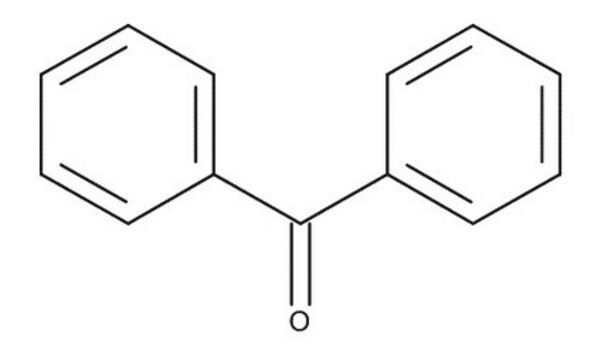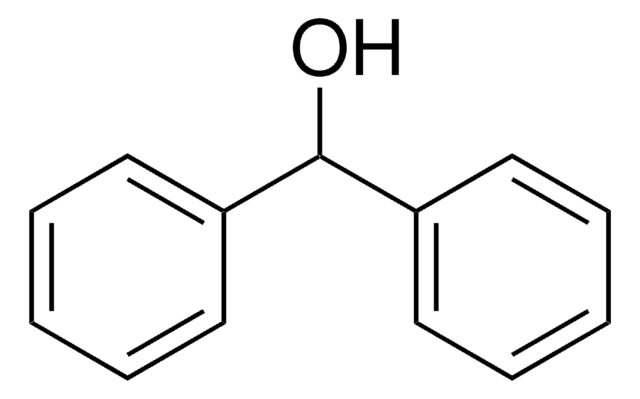Y0000647
Benzophenone
European Pharmacopoeia (EP) Reference Standard
Sinônimo(s):
Diphenyl ketone, Diphenylmethanone, NSC 8077
About This Item
Produtos recomendados
grau
pharmaceutical primary standard
Agency
EP Reference Standard
pressão de vapor
1 mmHg ( 108 °C)
família API
benzophenone
fabricante/nome comercial
EDQM
pb
305 °C (lit.)
pf
47-51 °C (lit.)
aplicação(ões)
pharmaceutical (small molecule)
formato
neat
temperatura de armazenamento
2-8°C
cadeia de caracteres SMILES
O=C(C1=CC=CC=C1)C2=CC=CC=C2
InChI
1S/C13H10O/c14-13(11-7-3-1-4-8-11)12-9-5-2-6-10-12/h1-10H
chave InChI
RWCCWEUUXYIKHB-UHFFFAOYSA-N
Procurando produtos similares? Visita Guia de comparação de produtos
Descrição geral
Aplicação
Embalagem
Outras notas
Palavra indicadora
Danger
Frases de perigo
Declarações de precaução
Classificações de perigo
Aquatic Chronic 3 - Carc. 1B - STOT RE 2 Oral
Órgãos-alvo
Liver,Kidney
Código de classe de armazenamento
6.1C - Combustible acute toxic Cat.3 / toxic compounds or compounds which causing chronic effects
Classe de risco de água (WGK)
WGK 1
Ponto de fulgor (°F)
280.4 °F - closed cup
Ponto de fulgor (°C)
138 °C - closed cup
Choose from one of the most recent versions:
Certificados de análise (COA)
Sorry, we don't have COAs for this product available online at this time.
If you need assistance, please contact Atendimento ao cliente
Já possui este produto?
Encontre a documentação dos produtos que você adquiriu recentemente na biblioteca de documentos.
Os clientes também visualizaram
Nossa equipe de cientistas tem experiência em todas as áreas de pesquisa, incluindo Life Sciences, ciência de materiais, síntese química, cromatografia, química analítica e muitas outras.
Entre em contato com a assistência técnica




